Force of nature: the Oculus channels the Sri Lankan landscape through its form
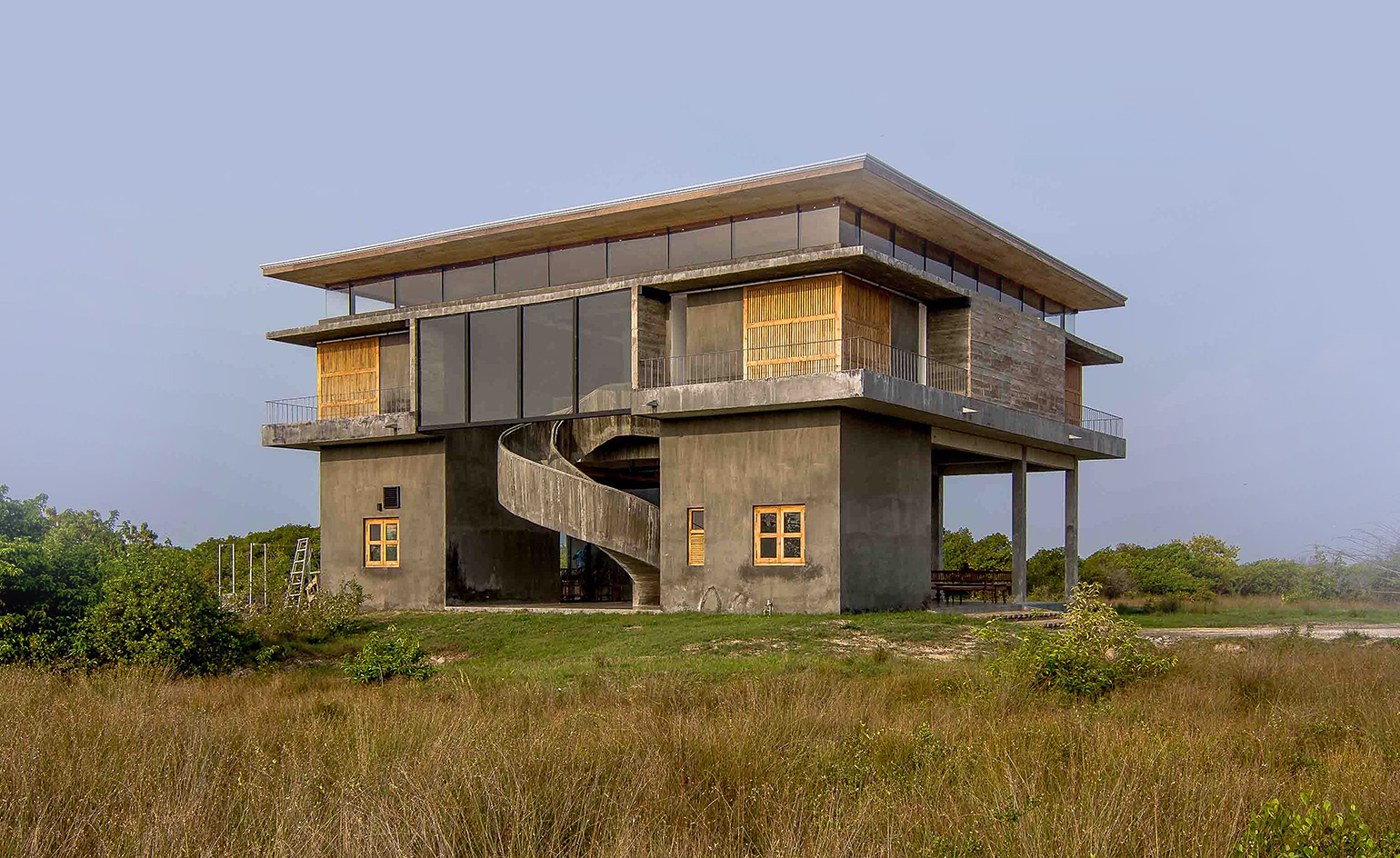
Rising up from the flat grasslands of Jaffna, Sri Lanka, the Oculus, designed by architecture firm Palinda Kannangara, is a residence for staff and visitors at the Jaffna wind power farm. Commissioned by Windforce, the Oculus sits at the first point of the axis which extends across the landscape to the wind farm hosting 16 wind power turbines, and the main monitoring station building, where the wind farm is controlled from.
The Oculus is named after the circular opening carved out in the centre of the building’s square roof. A pivot of natural light, water and the changing seasons, the oculus radiates light through the building and frames a view of the towering windmill beside it. Directly beneath the opening on the ground floor, a small pool of water gathers reaching various heights of depth across the seasons and catching the reflection of the windmill.
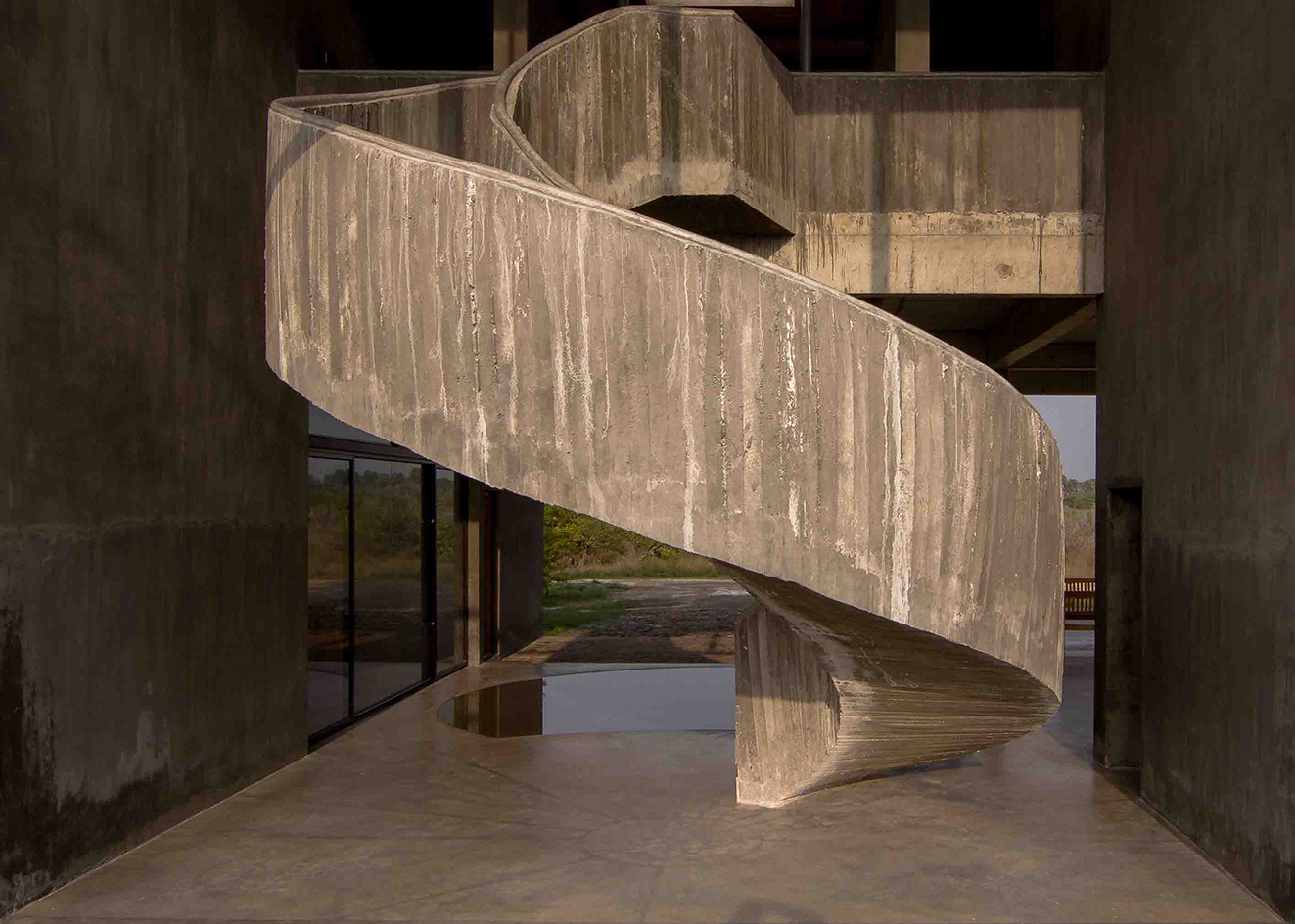
The sculptural staircase, exposed to the open landscape, meets the oculus pool in a dramatic architectural moment
A force of architecture with its concrete form is sturdy and strong, the design is not imposing on the environment, yet sensitive to its seasonal fluctuations and open to its beauty. High ceilings of 14ft and cut out spaces without windows reduce its solidity and open up the ground floor to the grassy landscape, which encroaches into the space at the edges.
The ground floor, which is hoisted two feet above the landscape, has a social open-plan design with the shallow pool at the core. The kitchen and dining room are enclosed, as are the caretakers quarters. A rough spiral staircase made of stone pavers winds up to the upper level where the sleeping and living quarters for visiting engineers, staff members and guests are located. Cut out windows in the four corner bedrooms reveal the depth of the concrete, into which glazed and timber screens can be hidden within.
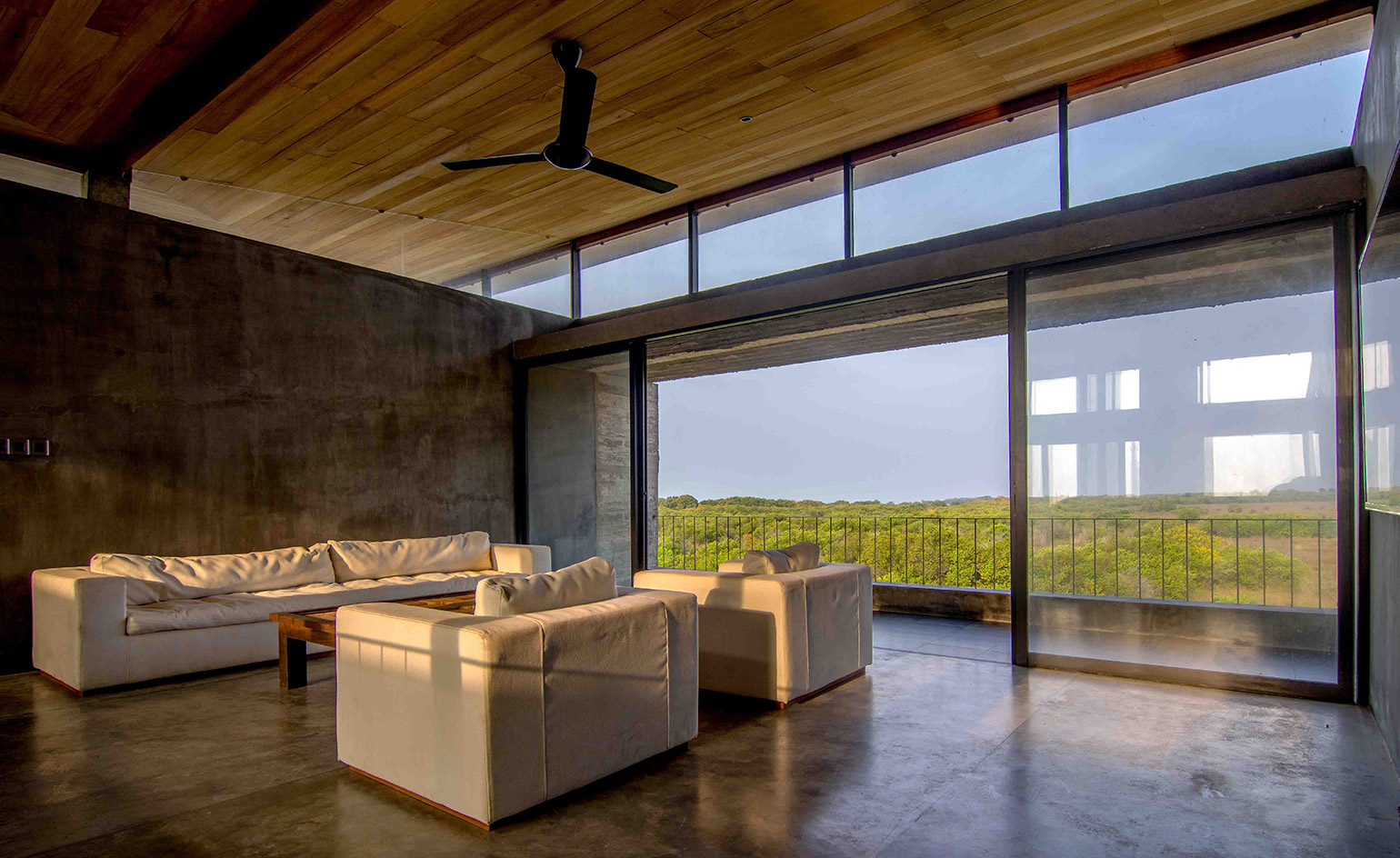
Microclimatic modulation was used to moderate temperature including timber screens and extended sunshades, fused seamlessly into the design
The timber screens as well as additional sunshades are designed as layers of protection against the extreme heat of the Jaffna sun, filtering light through to the inner glazed screens. Opened up they display endless views – after the monsoon, the landscape is blessed with clear blue skies extending across the scrubland.
Responding in colour and materiality to the earthy hues of the seasonal grasses, the tidal mudflat that extend for miles around the building and the blue-grey surface of the Jaffna lagoon, the polished cement floors and matte cement finished walls of the Oculus are cool and tactile like the exposed concrete form – only the bedrooms are painted white to soften the interior.
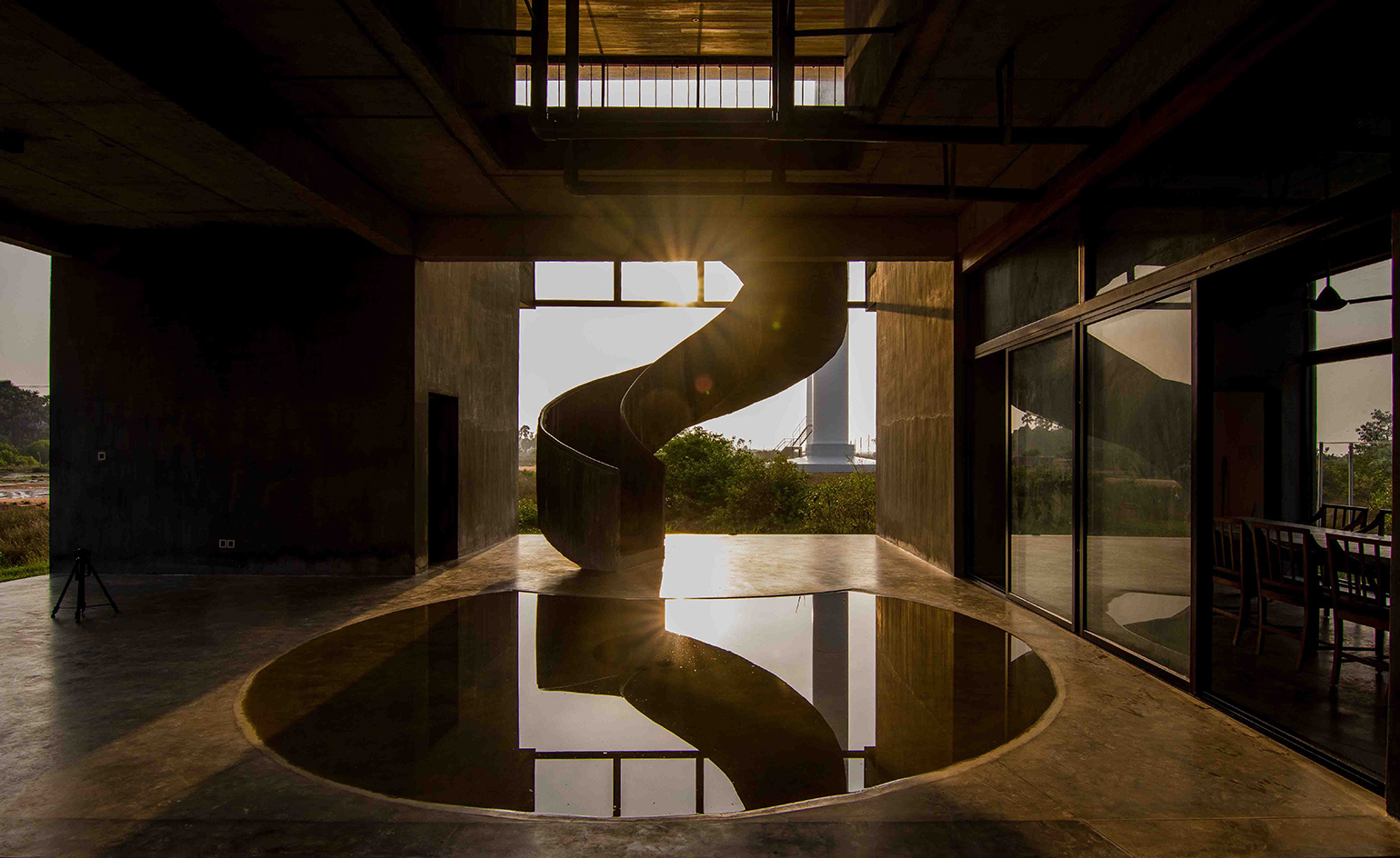
The 4,715 sq ft building made of exposed concrete with cement floors and walls within is simple and functional yet extremely sensitive to its surroundings
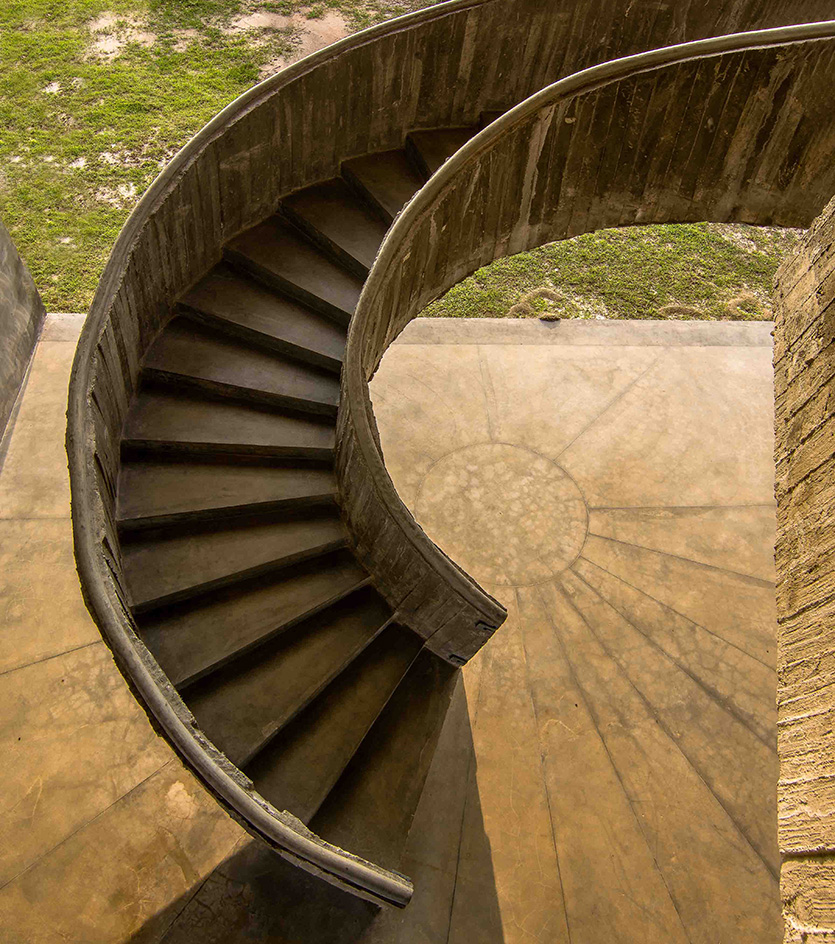
The sculptural spiral staircase is made from stone pavers with an eroded aesthetic that blends with the natural landscape

An oculus in the centre of the roof reveals views of the windmill beside the building
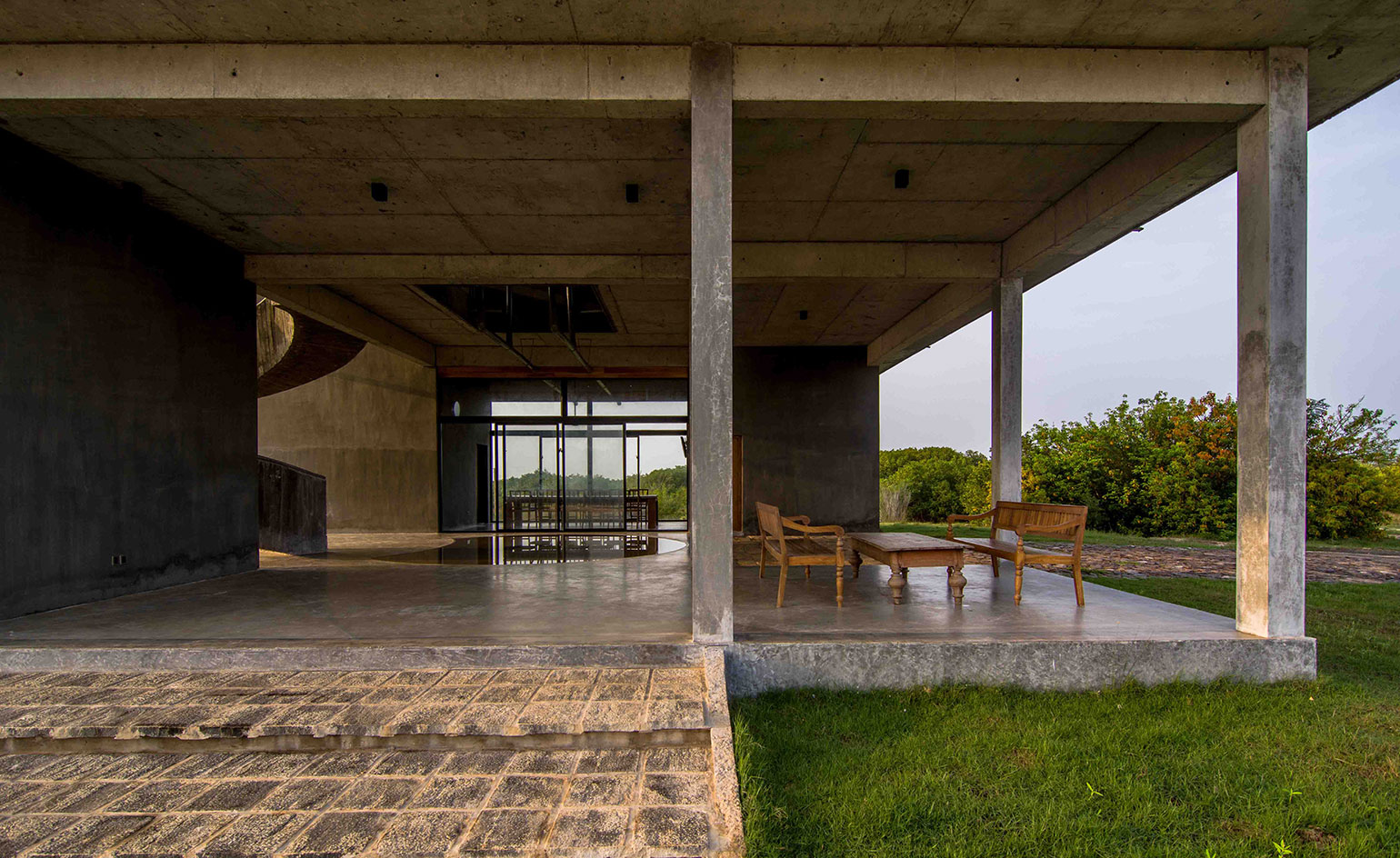
Inner glazed screen disappear neatly into the walls opening up the interior to uninhibited views of the surrounding scrubland

The upper floor consists of a living area, two rooms for staff and two rooms for guests, the four bedrooms are located in the four corners of the rectangular plan
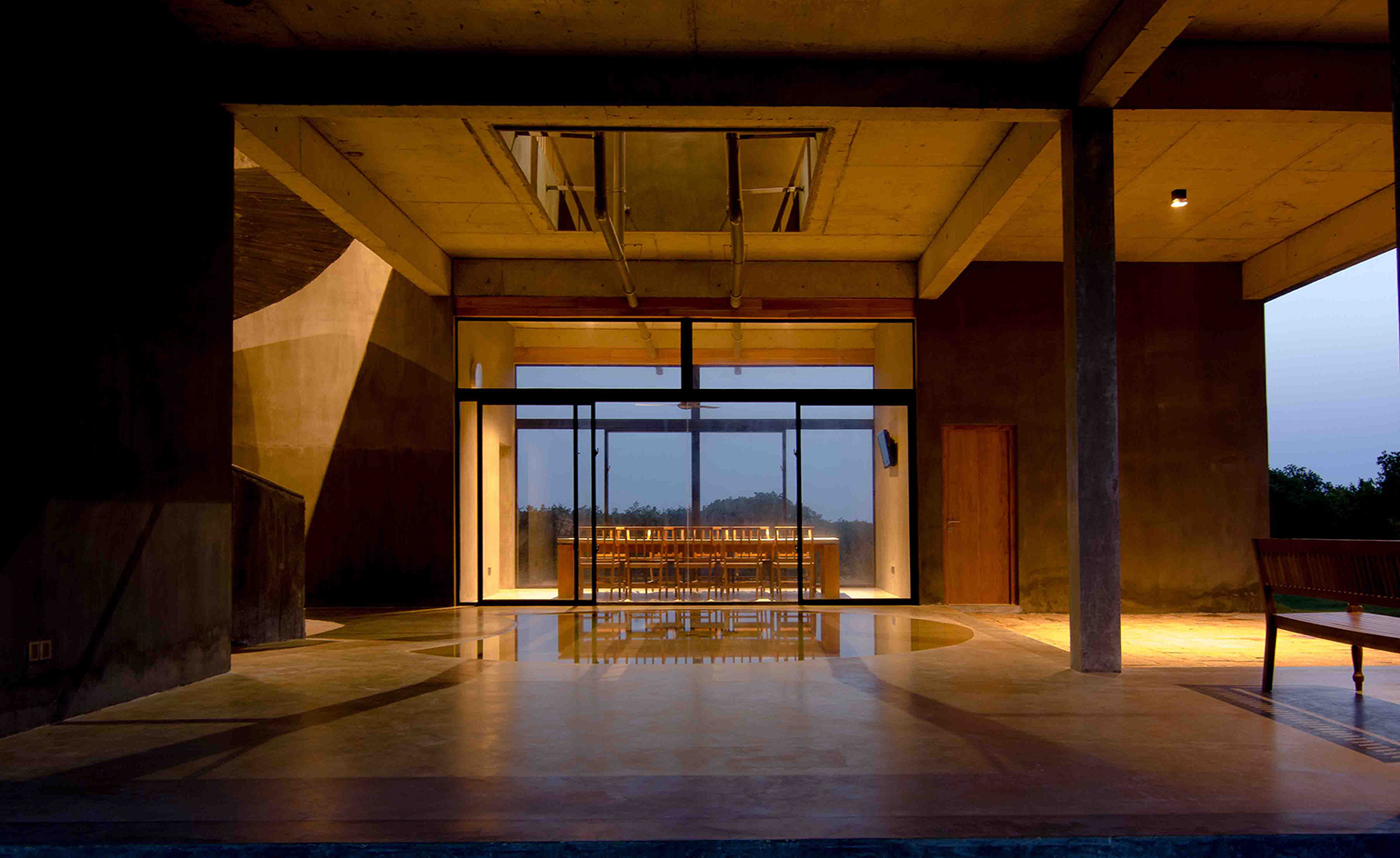
The landscape architect on the project was Varna Shashidhar
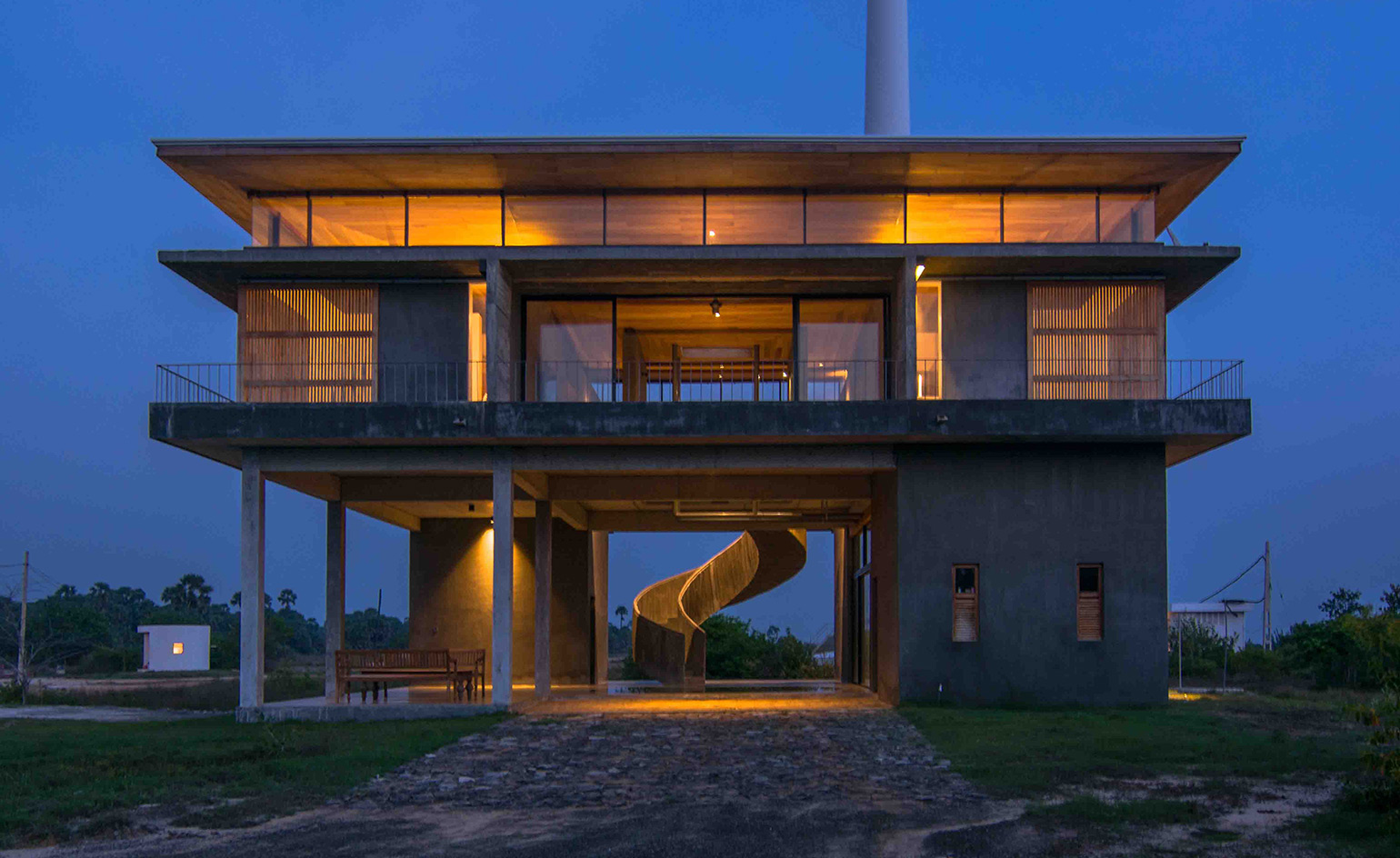
The roof supported by steel props slopes inwards toward the oculus in the centre of the roof, collecting water below, moderating temperature during the hot monsoon season
INFORMATION
For more information, visit the Palinda Kannangara website
Receive our daily digest of inspiration, escapism and design stories from around the world direct to your inbox.
Harriet Thorpe is a writer, journalist and editor covering architecture, design and culture, with particular interest in sustainability, 20th-century architecture and community. After studying History of Art at the School of Oriental and African Studies (SOAS) and Journalism at City University in London, she developed her interest in architecture working at Wallpaper* magazine and today contributes to Wallpaper*, The World of Interiors and Icon magazine, amongst other titles. She is author of The Sustainable City (2022, Hoxton Mini Press), a book about sustainable architecture in London, and the Modern Cambridge Map (2023, Blue Crow Media), a map of 20th-century architecture in Cambridge, the city where she grew up.
-
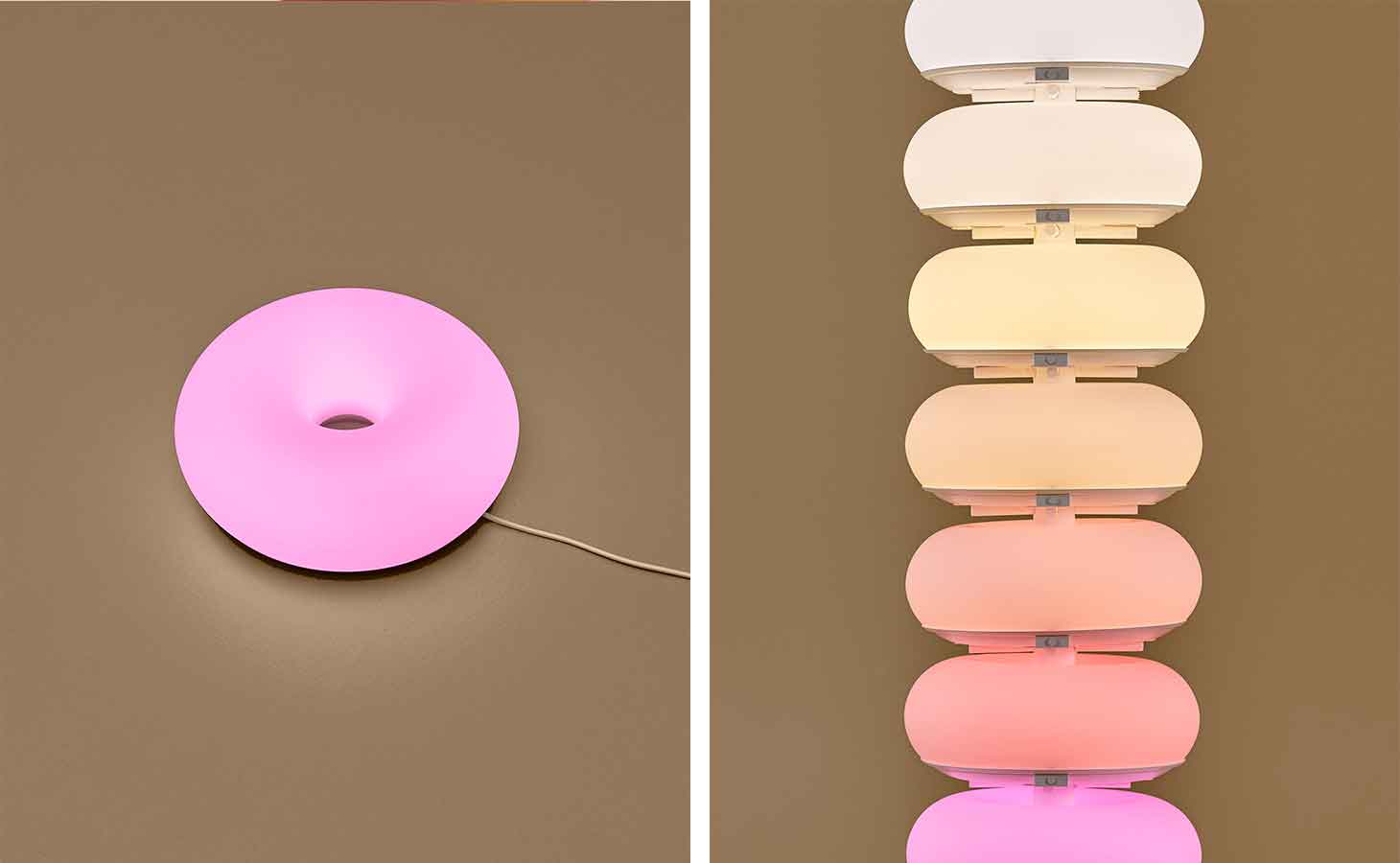 Sabine Marcelis has revisited her Ikea lamp and it’s a colourful marvel
Sabine Marcelis has revisited her Ikea lamp and it’s a colourful marvelSabine Marcelis’ ‘Varmblixt’ lamp for Ikea returns in a new colourful, high-tech guise
-
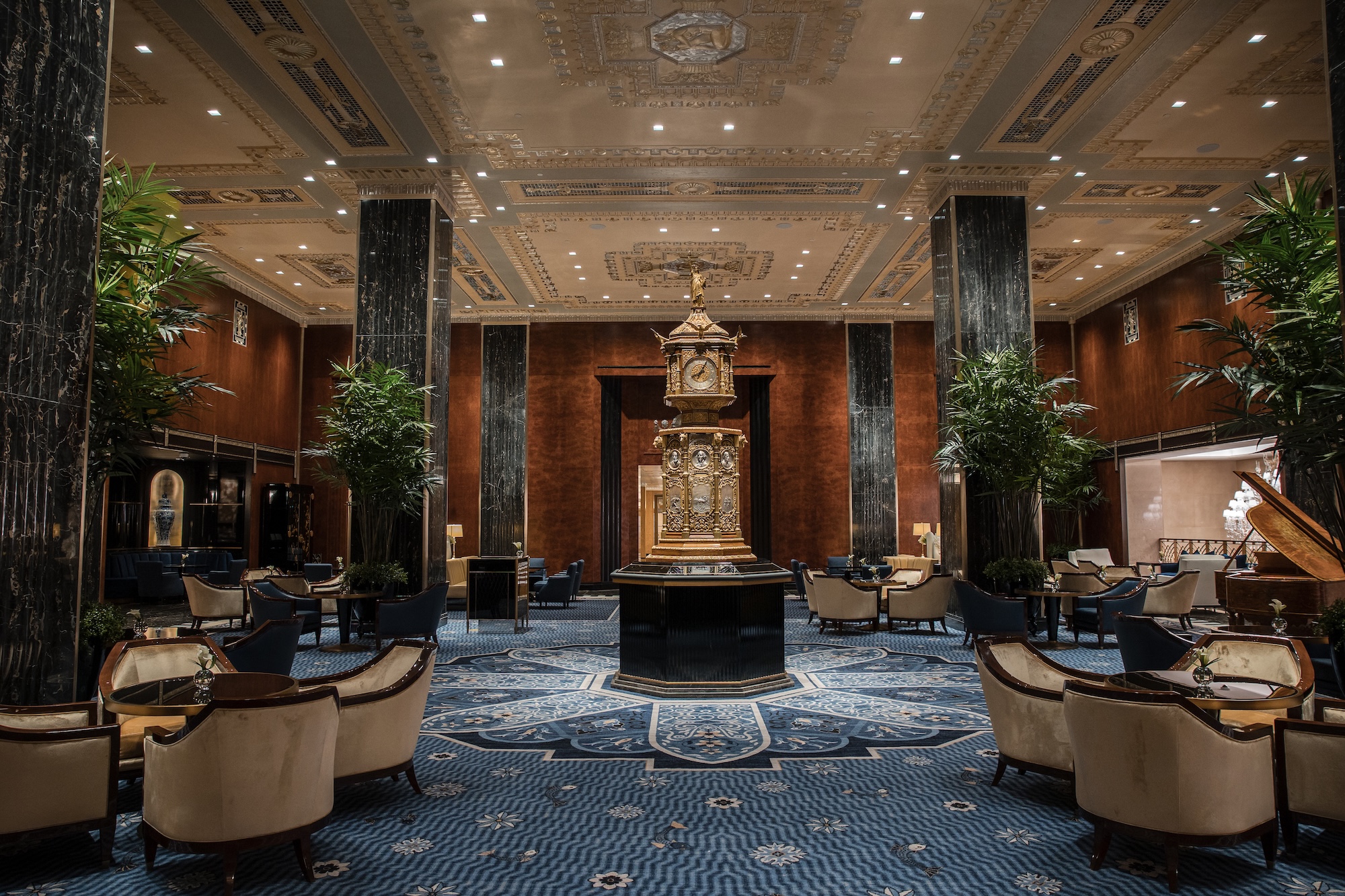 Is the Waldorf Astoria New York the ‘greatest of them all’? Here’s our review
Is the Waldorf Astoria New York the ‘greatest of them all’? Here’s our reviewAfter a multi-billion-dollar overhaul, New York’s legendary grand dame is back in business
-
 Colleen Allen’s poetic womenswear is made for the modern-day witch
Colleen Allen’s poetic womenswear is made for the modern-day witchAllen is one of New York’s brightest young fashion stars. As part of Wallpaper’s Uprising column, Orla Brennan meets the American designer to talk femininity, witchcraft and the transformative experience of dressing up
-
 A day in Ahmedabad – tour the Indian city’s captivating architecture
A day in Ahmedabad – tour the Indian city’s captivating architectureIndia’s Ahmedabad has a thriving architecture scene and a rich legacy; architect, writer and photographer Nipun Prabhakar shares his tips for the perfect tour
-
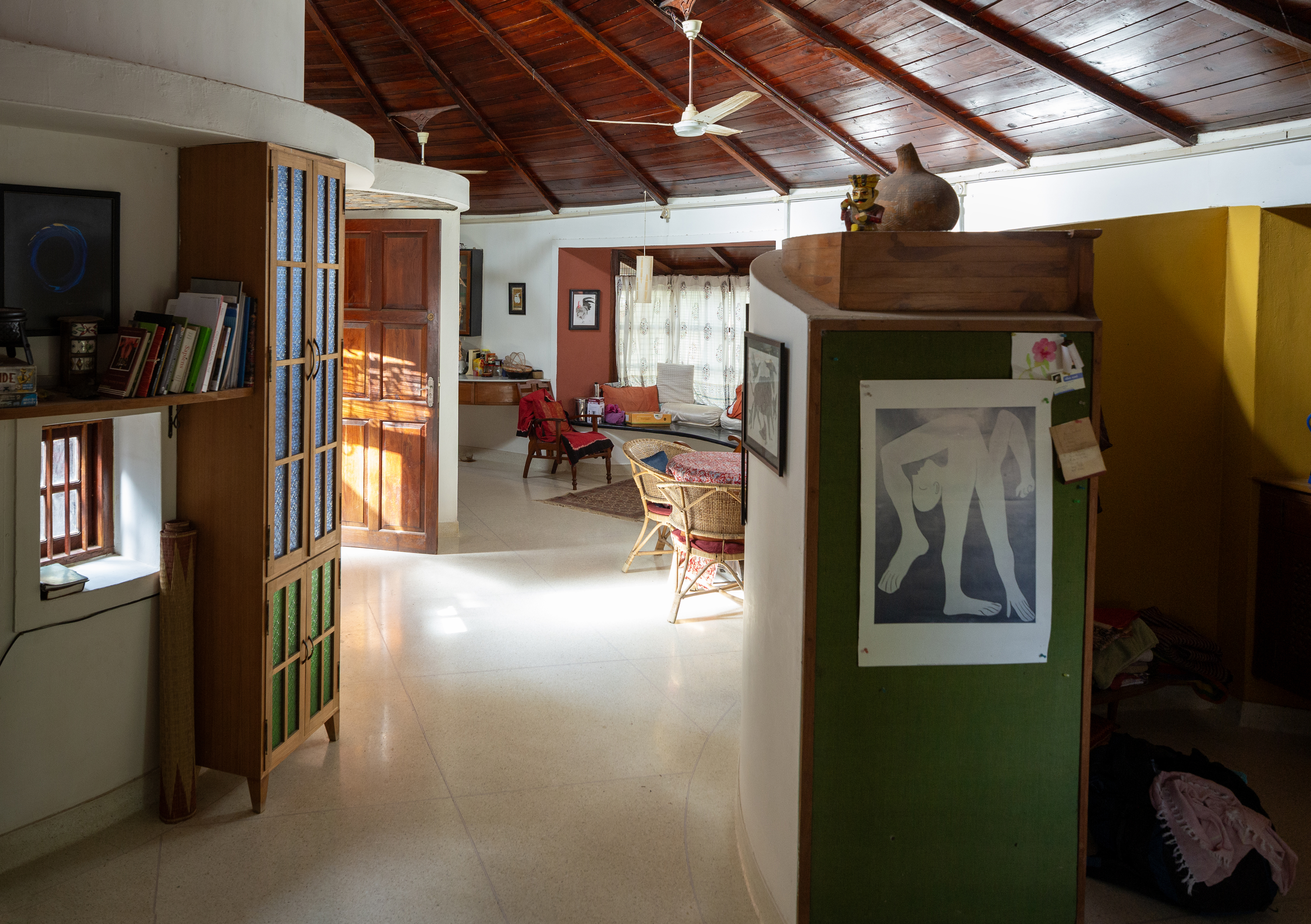 Inside a creative couple's magical, circular Indian home, 'like a fruit'
Inside a creative couple's magical, circular Indian home, 'like a fruit'We paid a visit to architect Sandeep Virmani and social activist Sushma Iyengar at their circular home in Bhuj, India; architect, writer and photographer Nipun Prabhakar tells the story
-
 The Architecture Edit: Wallpaper’s houses of the month
The Architecture Edit: Wallpaper’s houses of the monthFrom wineries-turned-music studios to fire-resistant holiday homes, these are the properties that have most impressed the Wallpaper* editors this month
-
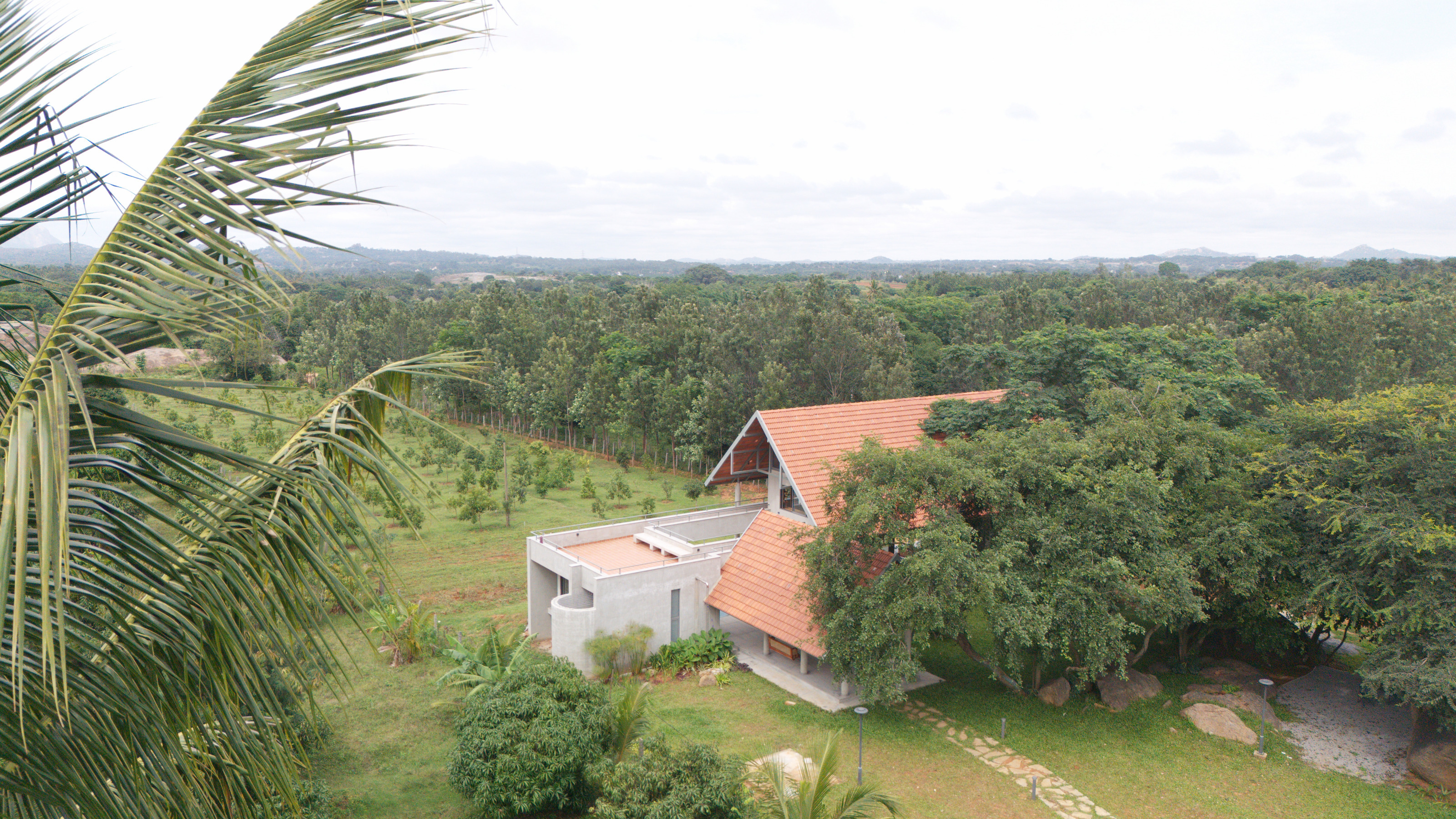 A refined Indian country residence reimagines the farmhouse
A refined Indian country residence reimagines the farmhouseSet among Karnataka’s rolling fields and forest, House by the Grove by Taliesyn Design & Architecture combines modern materials with an open approach to the elements
-
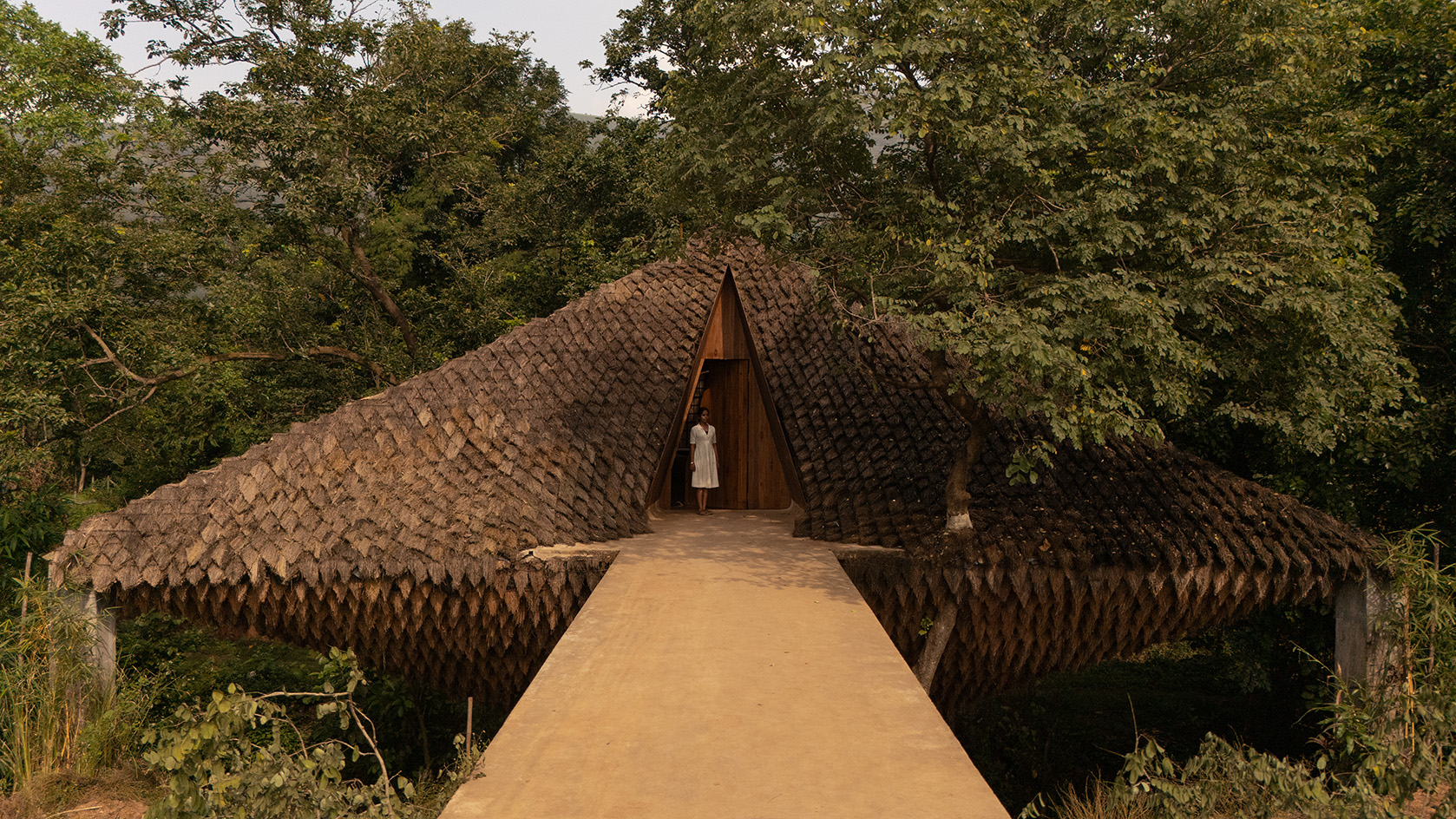 Half bridge, half home: Wallmakers’ latest project takes architecture to daring new heights
Half bridge, half home: Wallmakers’ latest project takes architecture to daring new heightsHovering above a forest stream in Maharashtra, Bridge House pushes the limits of engineering and eco-conscious design
-
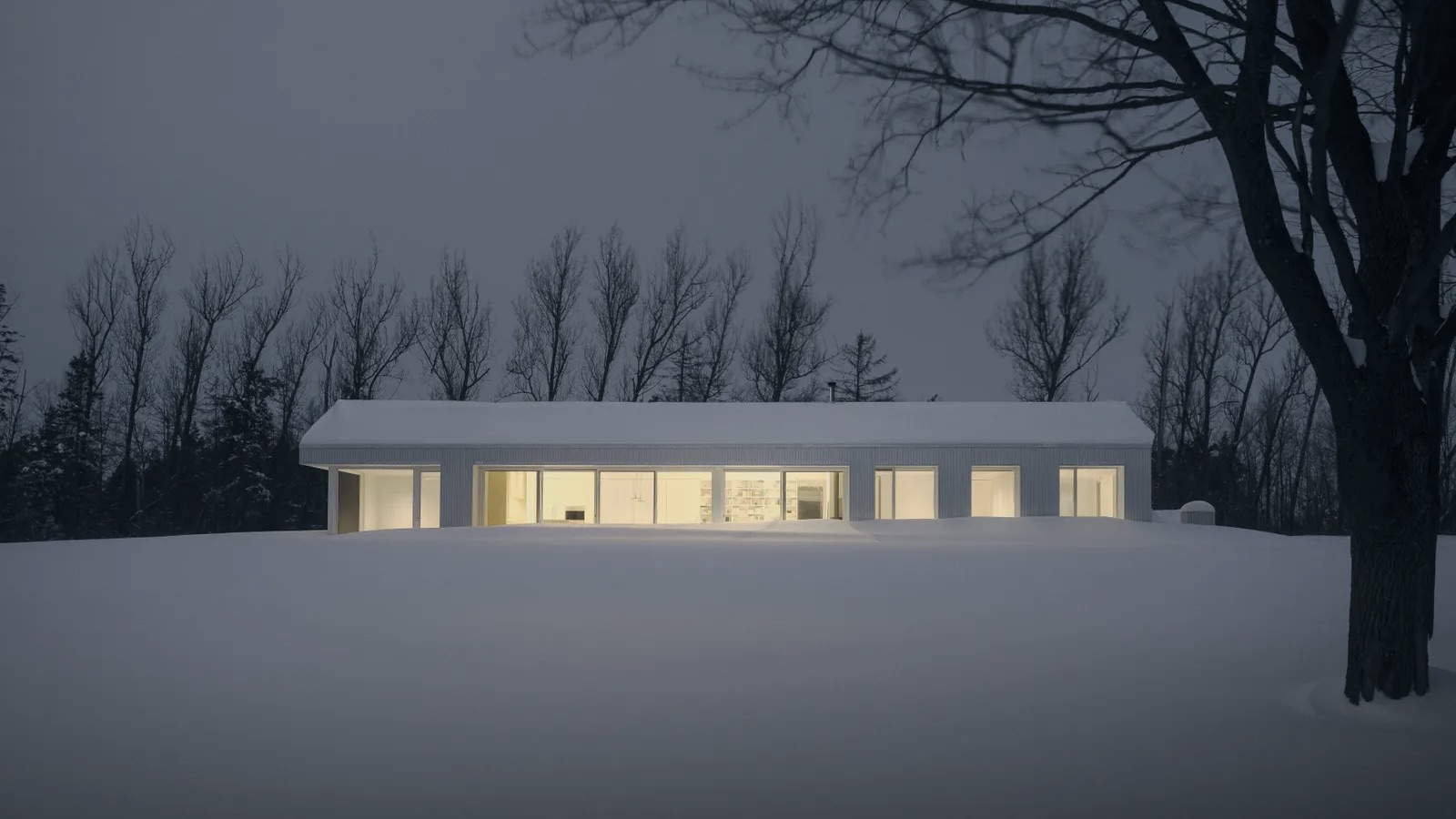 The Architecture Edit: Wallpaper’s houses of the month
The Architecture Edit: Wallpaper’s houses of the monthFrom Malibu beach pads to cosy cabins blanketed in snow, Wallpaper* has featured some incredible homes this month. We profile our favourites below
-
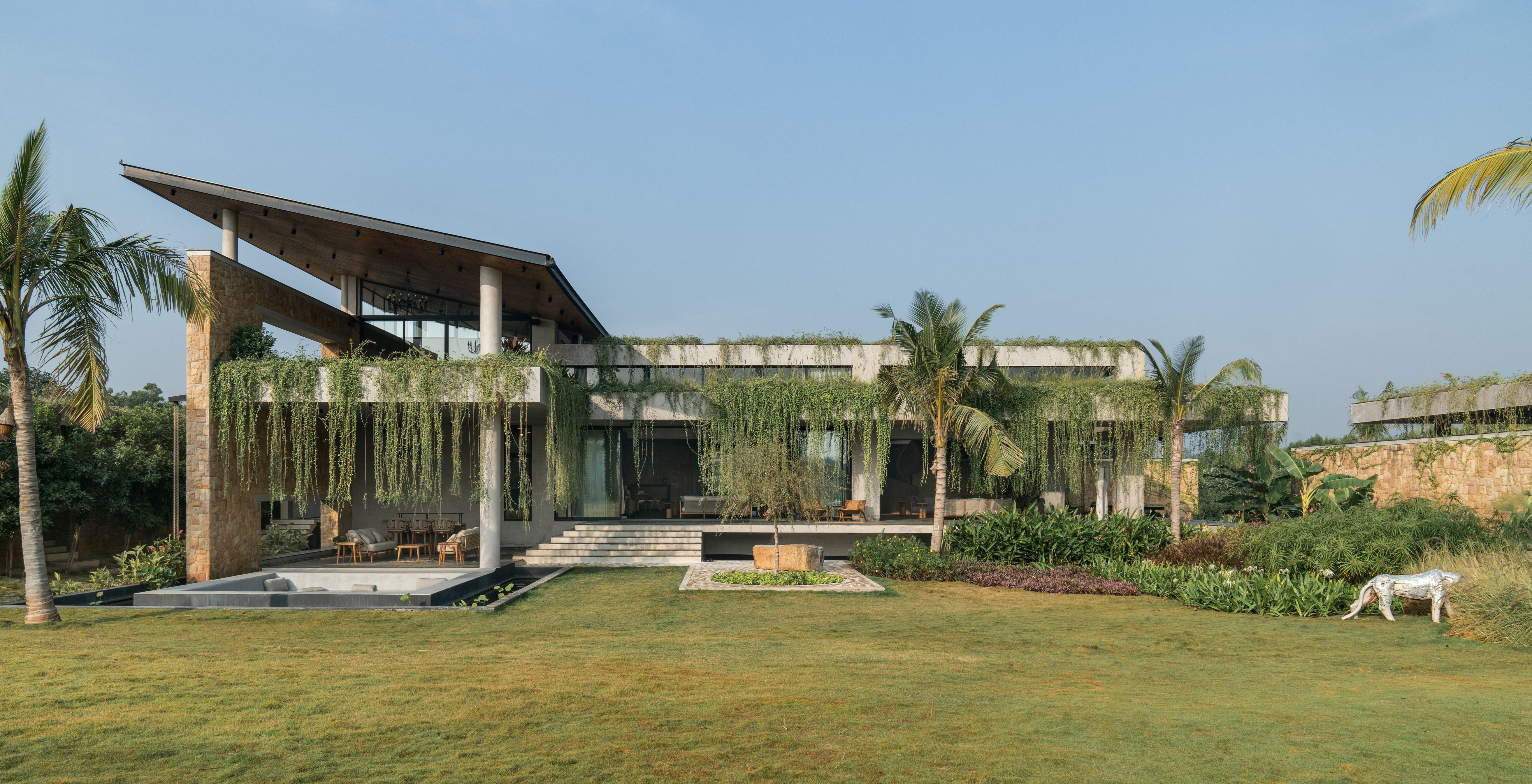 Cascading greenery softens the brutalist façade of this Hyderabad home
Cascading greenery softens the brutalist façade of this Hyderabad homeThe monolithic shell of this home evokes a familiar brutalist narrative, but designer 23 Degrees Design Shift softens the aesthetic by shrouding Antriya in lush planting
-
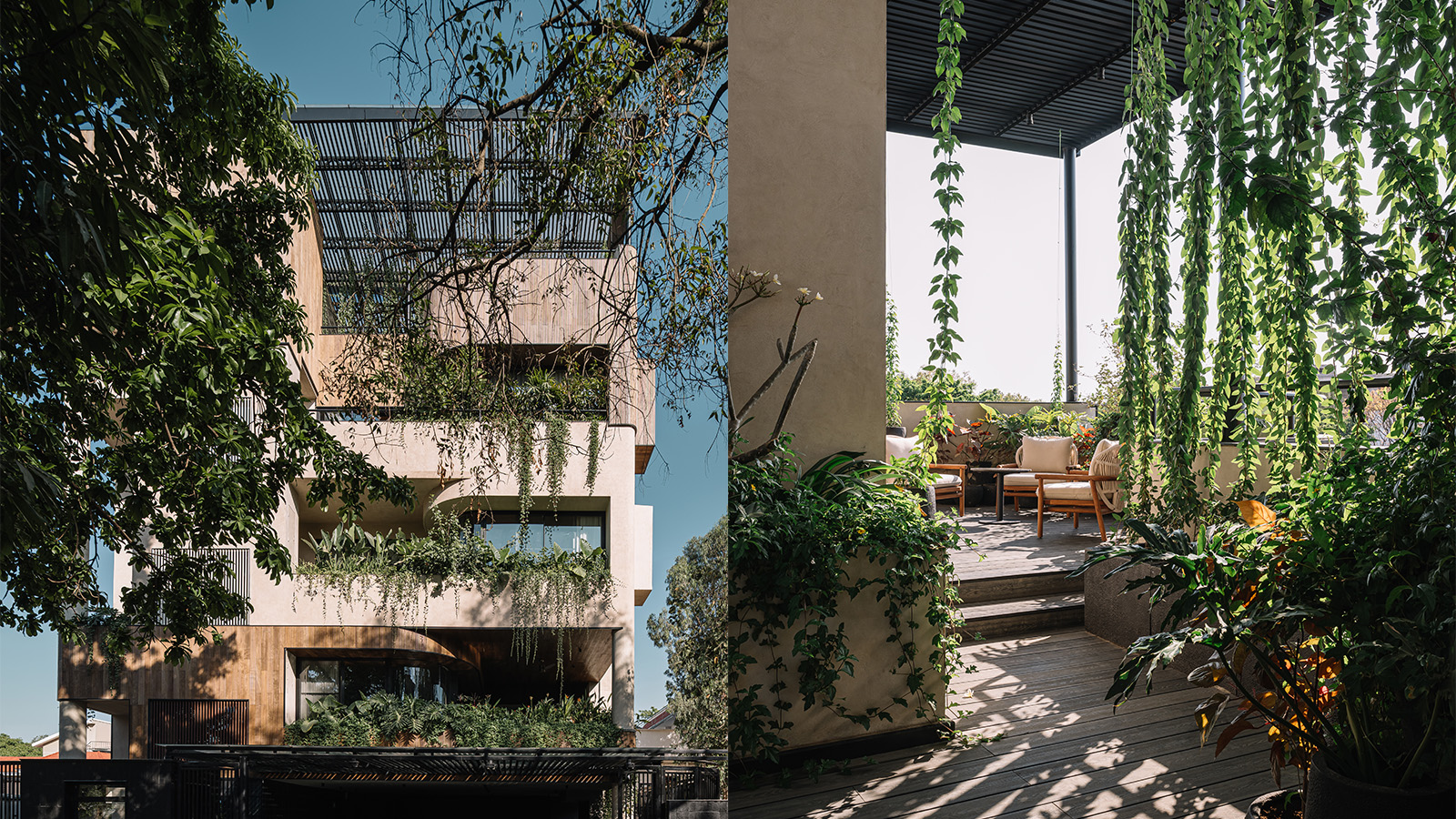 A lush Bengaluru villa is a home that acts as a vessel for nature
A lush Bengaluru villa is a home that acts as a vessel for natureWith this new Bengaluru villa, Purple Ink Studio wanted gardens tucked into the fabric of the home within this urban residence in India's 'Garden City'